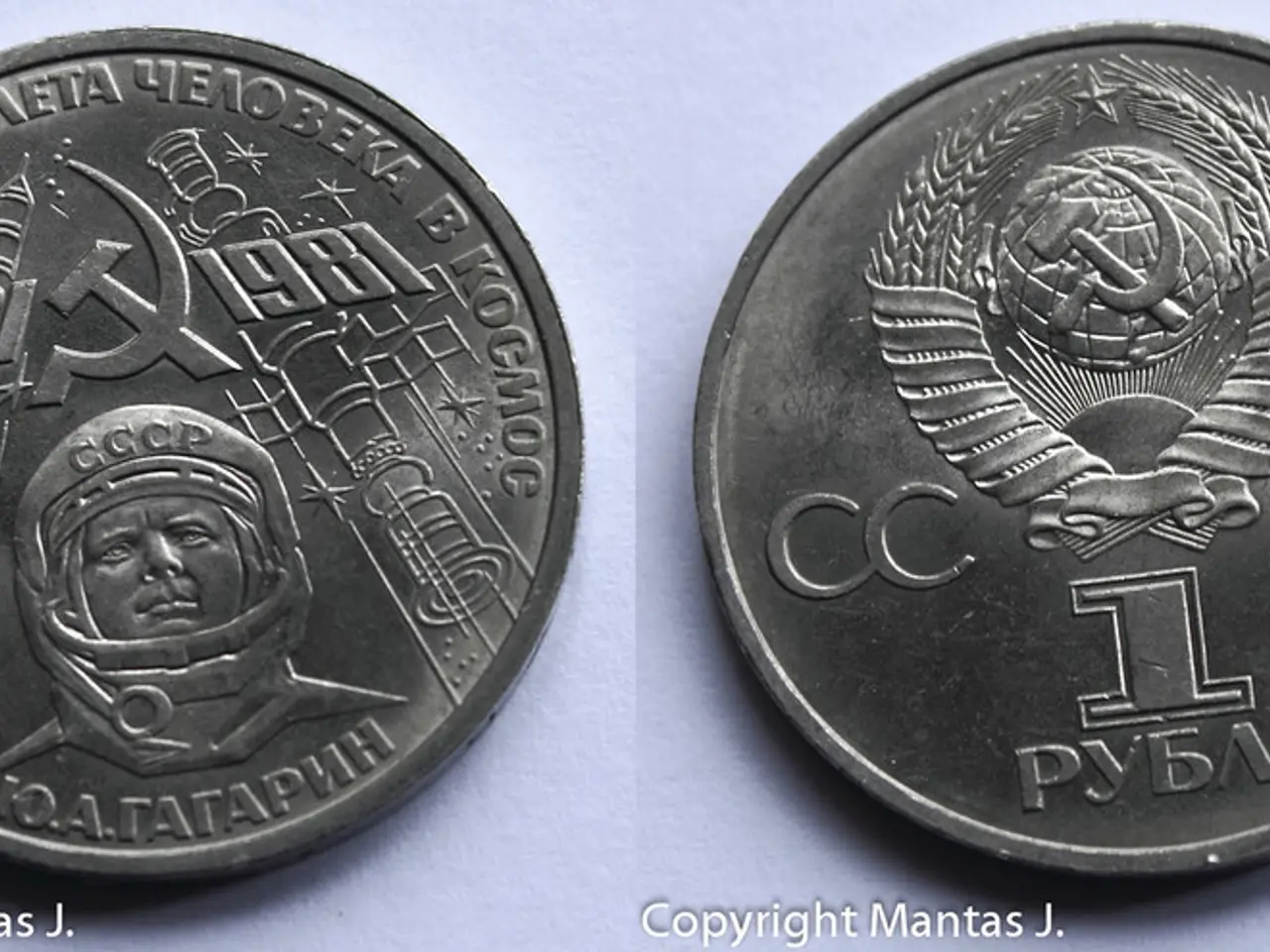Digital asset managers predominantly disapprove of the proposal for digital assets
Central banks and public investors are reconsidering the meaning of stability in a more fragmented financial landscape, as revealed in OMFIF's Global Public Investor series. The series explores the investment strategies of central bank reserve managers, public pension funds, and sovereign funds across the world.
A notable finding is that not a single central bank surveyed holds any digital assets, and 93% have no intention of doing so. However, technological innovation in blockchain and digital currencies could reshape reserve currency dynamics. Major central banks are exploring Central Bank Digital Currencies (CBDCs) to modernize payments and enhance monetary sovereignty.
One of the alternatives to the U.S. dollar as a global reserve currency is the Chinese Renminbi (RMB). The renminbi has grown as a reserve currency since its inclusion in the IMF's Special Drawing Rights (SDR) basket in 2016, benefiting from China’s large economy, deep financial markets, and trade surplus. However, its global role is curtailed by capital controls, limited convertibility, geopolitical tensions, and concerns over transparency.
Another alternative is the BRICS currency, a potential new currency under development by the BRICS nations (Brazil, Russia, India, China, South Africa). The idea aims to reduce dollar dependency with multi-polar currency hubs and new supranational financial infrastructure. Yet, internal challenges—such as Russia's sanction status, concerns over China’s dominance, weak legal frameworks in some members, and a complex consensus process—pose obstacles to the BRICS currency becoming a true global reserve.
The euro is the second most widely held reserve currency after the dollar, accounting for about 20% of global reserves. Despite its economic significance, structural issues like fragmented governance and lack of military-political cohesion undermine trust in the euro as a sole global reserve alternative.
The shift away from the dollar could reduce U.S. global economic and political leverage, including its ability to impose sanctions and influence international finance. Multipolar currency hubs could reflect or accelerate geopolitical decentralization, especially with emerging powers and regional blocs asserting independence from the U.S.-led order.
A decline in dollar dominance could increase transaction costs and currency risks due to more fragmented global settlement systems. However, the emergence of multiple reserve currencies and digital alternatives might enhance financial system resilience and reduce systemic dependencies on a single currency.
Despite challenges, the U.S. dollar currently retains its dominant position, accounting for roughly 60% of global foreign exchange reserves due to its scale, liquidity, crisis infrastructure, and global trust. Emerging alternatives highlight growing multipolarity but are unlikely to replace the dollar fully in the near to medium term.
Japan has an opportunity to move closer to the limelight as de-dollarisation accelerates, while European safe assets are back in focus. Reports of the dollar's demise are greatly exaggerated, according to Massimiliano Castelli, head of strategy and advice at UBS Asset Management.
Cryptocurrencies, while accelerating geopolitical shifts, have not provided specific details on how they could impact the global reserve currency landscape. The dollar will remain the default currency, and other currencies will have to earn their higher status, according to Geoffrey Yu, senior EMEA markets strategist at BNY.
In conclusion, while the future of global reserves is uncertain, the U.S. dollar remains dominant, and emerging alternatives face significant economic, political, and structural challenges. The financial landscape is evolving, and it will be interesting to see how central banks and public investors adapt to these changes in the coming years.
References:
- OMFIF (2021). The Global Reserve Response After 2 April. Retrieved from https://www.omfif.org/research/the-global-reserve-response-after-2-april
- OMFIF (2021). Beyond the Dollar: The Future of the Global Reserve System. Retrieved from https://www.omfif.org/research/beyond-the-dollar-the-future-of-the-global-reserve-system
- OMFIF (2021). The Future of the Global Reserve System: A New Era?. Retrieved from https://www.omfif.org/research/the-future-of-the-global-reserve-system-a-new-era
- James, H. (2021). Gold as a Weapon of War. Retrieved from https://www.omfif.org/research/gold-as-a-weapon-of-war
- Aziz, Y. (2021). Reconsidering Stability in a More Fragmented Financial Landscape. Retrieved from https://www.omfif.org/research/reconsidering-stability-in-a-more-fragmented-financial-landscape
- Central banks and public investors are reevaluating the concept of stability in a more disparate financial ecosystem, as exposed in OMFIF's Global Public Investor series.
- The series delves into the investment strategies of central bank reserve managers, public pension funds, and sovereign funds globally.
- No central bank surveyed in the series holds any digital assets, and 93% have no plans to do so.
- Technological innovation in blockchain and digital currencies could potentially redefine reserve currency dynamics.
- Major central banks are researching Central Bank Digital Currencies (CBDCs) to modernize payments and uphold monetary sovereignty.
- One alternative to the U.S. dollar as a global reserve currency is the Chinese Renminbi (RMB), which has grown in significance since its inclusion in the IMF's Special Drawing Rights (SDR) basket in 2016.
- The global role of the renminbi is, however, hampered by capital controls, limited convertibility, geopolitical tensions, and concerns over transparency.
- Despite economic significance, the euro has structural issues that reduce trust in it as a sole global reserve alternative, such as fragmented governance and lack of political-military cohesion.




